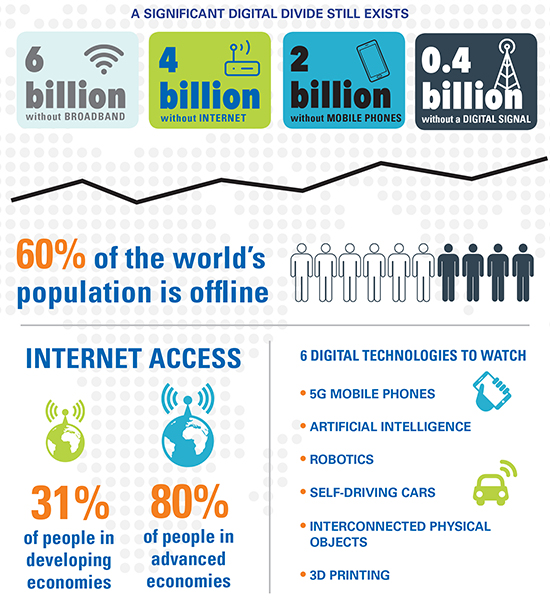Digital Divide
Finance & Development, September 2016, Vol. 53, No. 3
Despite the rapid spread of digital technologies, the anticipated benefits of higher growth and more jobs have fallen short
Digital technologies—the Internet, mobile phones, and all the other tools to collect, store, and share information digitally—have spread rapidly in much of the world. The number of Internet users has more than tripled in the past decade—from 1 billion in 2005 to an estimated 3.2 billion at the end of 2015. But the anticipated digital dividends of higher growth, more jobs, and better public services have fallen short.

According to a new World Bank report, World Development Report 2016: Digital Dividends, nearly 60 percent of the world’s population—or 4 billion people—are still offline and can’t fully participate in the digital economy. In addition, some of the benefits of the Internet are being offset by new risks, such as a poor business climate and vested business interests that limit competition and inhibit future innovation.
Closing the remaining digital divide by making the Internet universally accessible, affordable, open, and safe is vital but not enough. Digital investments also need the support of analog complements—stronger regulations to ensure competition among firms, action plans to adapt workers’ skills to new demands, and more accountable institutions to upgrade public services.

Prepared by Natalie Ramírez-Djumena. Text and charts are based on World Development Report 2016: Digital Dividends, published by The World Bank in January 2016. The report is available at www.worldbank.org/en/publication/wdr2016
Opinions expressed in articles and other materials are those of the authors; they do not necessarily reflect IMF policy.


